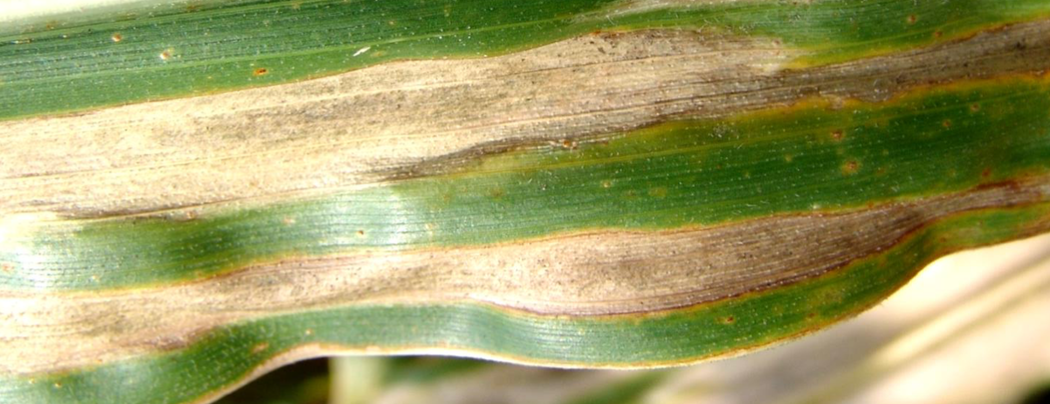Northen leaf blight of maize
C/O: Setosphaeria turcica (anamorph: Exserohilum turcicum)
Symptoms:
- Early symptoms appear as long, narrow, tan lesions that form parallel to leaf margins (Fig1).
- As these lesions develop, the classic symptoms of NCLB will be observed: long, oblong, or “cigarshaped” tan or grayish lesions (Fig2).
- The lesions produce olive-green or black fungal spores when humidity is high, which can give the lesions a dark or dirty appearance.
- Generally, disease is more severe after tasseling due to the nutritional variation in crop stages.

Etiology:
- Facultative saprophyte
- Conidiophores: 2-6 in number, emerge from stomata, brown in color, 2-4 septa
- Conidia: 3-8 septa (may be true or pseudo), Straight or slightly curved, widest at the center, presence of hilum.
Favorable condition:
- Relatively cool, wet seasons, 6 hours of leaf wetness, temperature 18 and 27 °C
- Sporulation requires a 14-hour dew period between 20 and 25 °C.
- Sporulation often occurs during nighttime and is halted when humidity falls during the day.
- Infection is inhibited by high light intensity and warm temperatures.
Survive and spread:
- Survive: Perithecium containing asci with ascospores and conidiophore as resting stage which present on soil, crop debris etc.
- Spread: wind borne conidia.
Disease cycle:
- Polycyclic disease

Management:
- Use disease free
- Rotation with non-susceptible crops
- Collect and destroy infected plant debris
- Treat the seeds with Captan or Thiram at 4 g/kg.
- Spray the crop with Mancozeb@0.25% at the age of 40 days and the spraying have to be repeated twice at 15 days